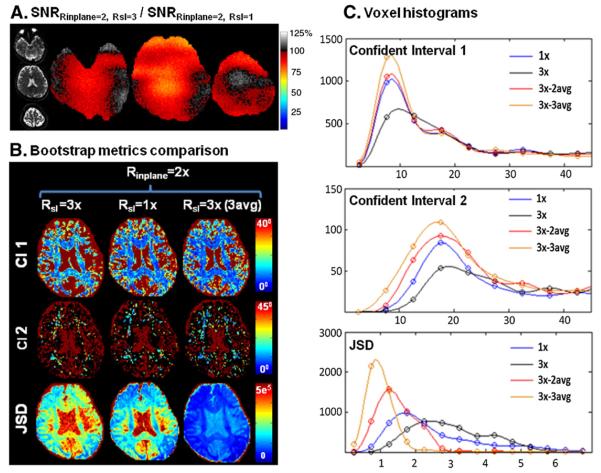Fig. 4.
Results from 3× slice and 2× in-plane accelerated blipped-CAIPI acquisition with FOV/4 inter-slice shift. A) Unfolded images of an aliased slice group and the corresponding Monte-Carlo generated SNR ratio. B) Bootstrap metrics comparison left: 95% confidence interval of the primary (CI 1) and the secondary (CI 2) fiber directions and JSD of the ODF of the Q-ball reconstruction i) 3× slice and 2× in-plane accelerated (3.3 min), ii) 2× in-plane accelerated (10 min) and iii) three averages of 3× slice and 2× in-plane accelerated (10 min) acquisitions. C) The corresponding voxel histograms of the confident intervals and JSD of the three acquisition schemes and of iv) two averages of the 3× slice and 2× in-plane accelerated (6.6 min) acquisition. The uncertainty measures of the 3× slice and 2× in-plane accelerated (3.3 min) acquisition are higher than that of the 2× in-plane accelerated (10 min) acquisition; highlighting an SNR reduction per shot. The 2 and 3 averages of the 3× slice and 2× in-plane accelerated acquisition (6.6 and 10 min) both provide superior performances in comparison to the 2× in-plane accelerated acquisition, with performance clearly improving with more averages. This illustrates the gain in SNR per unit time of the blipped-CAIPI acquisition.

